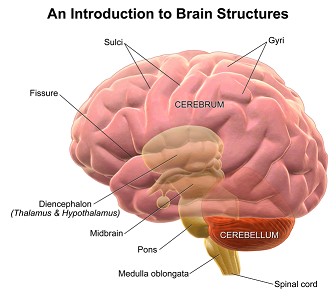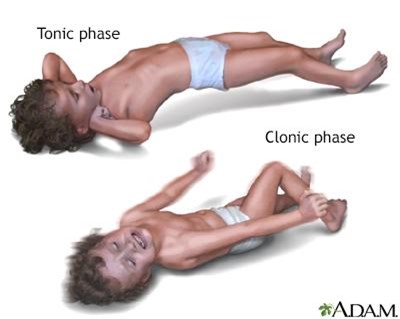A patient who is unconscious after a head injury has cerebral edema. Which nursing intervention will be included in the plan of care?
Encourage coughing and deep breathing
Position the patient with knees and hips flexed
Perform nursing interventions once an hour to provide rest periods
Keep the head of the bed elevated to 30 degrees
The Correct Answer is D
Choice A Reason: This is incorrect because encouraging coughing and deep breathing can increase intracranial pressure (ICP), which is the pressure inside the skull that can affect brain function. Coughing and deep breathing can increase blood flow and oxygen demand to the brain, which can worsen cerebral edema. The nurse should suction the patient as needed and maintain a patent airway.
Choice B Reason: This is incorrect because positioning the patient with knees and hips flexed can increase ICP by reducing venous drainage from the head. The nurse should position the patient with neck and body in alignment and avoid extreme flexion or extension of any joints.
Choice C Reason: This is incorrect because performing nursing interventions once an hour can disturb the patient's sleep and increase ICP by stimulating brain activity. The nurse should cluster nursing interventions and provide quiet and dark environment to promote rest and reduce stress.
Choice D Reason: This is correct because keeping the head of the bed elevated to 30 degrees can decrease ICP by facilitating venous drainage from the head and reducing cerebral blood volume. The nurse should monitor the patient's blood pressure and pulse to ensure adequate cerebral perfusion.

Nursing Test Bank
Naxlex Comprehensive Predictor Exams
Related Questions
Correct Answer is C
Explanation
Choice A Reason: This choice is incorrect. Instilling eye drops in both eyes every hour around the clock is not an information that the nurse will provide, as it is not a recommended treatment for chronic bilateral inflammation of the eyelid margins. This condition is also known as blepharitis, which is a common and chronic disorder that causes redness, itching, burning, and crusting of the eyelids. Eye drops may be used to relieve symptoms, but not every hour or without a prescription.
Choice B Reason: This choice is incorrect. Using sterile gloves when assisting with activities of daily living is not an information that the nurse will provide, as it is not a necessary precaution for chronic bilateral inflammation of the eyelid margins. Blepharitis is not contagious or infectious, but rather caused by an overgrowth of bacteria or mites on the eyelids, or by an underlying skin condition such as seborrheic dermatitis or rosacea.
Choice C Reason: This is the correct choice. Using baby shampoo on the eyelid margins is an information that the nurse will provide, as it is a simple and effective way to clean and soothe the eyelids. Baby shampoo is gentle and non-irritating, and can help remove excess oil, debris, and scales from the eyelids. The nurse will instruct the caregiver to dilute a few drops of baby shampoo with warm water, apply it to a cotton ball or washcloth, and gently rub it along the eyelid margins. The nurse will also advise to rinse well with water and pat dry with a clean towel.
Choice D Reason: This choice is incorrect. Using a salt scrub inside the eyelid is not an information that the nurse will provide, as it is a harmful and painful method that can damage and irritate the eye. Salt scrub is abrasive and drying, and can cause corneal abrasion, infection, or inflammation. The nurse will warn the caregiver to avoid using any harsh or unapproved products on or near the eye.
Correct Answer is ["D","E"]
Explanation
Choice A Reason: This choice is incorrect. Placing the client into a supine position is not an action that the nurse should take, as it can compromise the airway and increase the risk of aspiration. The nurse should position the client on their side with their head tilted slightly forward to allow saliva and secretions to drain out of their mouth.
Choice B Reason: This choice is incorrect. Applying restraints is not an action that the nurse should take, as it can cause injury and increase agitation. The nurse should protect the client from harm by removing any objects or furniture that may cause harm and padding any hard surfaces with blankets or pillows.
Choice C Reason: This choice is incorrect. Inserting a bite stick into the client's mouth is not an action that the nurse should take, as it can cause injury and obstruction. The nurse should never force anything into the client's mouth during a seizure, as it can damage their teeth, gums, tongue, or jaw.
Choice D Reason: This is a correct choice. Loosening restrictive clothing is an action that the nurse should take, as it can improve breathing and circulation. The nurse should unbutton any tight collars, belts, or ties that may constrict the chest or neck.
Choice E Reason: This is a correct choice. Placing a pillow under the client's head is an action that the nurse should take, as it can prevent injury and provide comfort. The nurse should support the client's head with a soft pillow or cushion to prevent hitting it against any hard surfaces.

Whether you are a student looking to ace your exams or a practicing nurse seeking to enhance your expertise , our nursing education contents will empower you with the confidence and competence to make a difference in the lives of patients and become a respected leader in the healthcare field.
Visit Naxlex, invest in your future and unlock endless possibilities with our unparalleled nursing education contents today
Report Wrong Answer on the Current Question
Do you disagree with the answer? If yes, what is your expected answer? Explain.
Kindly be descriptive with the issue you are facing.
